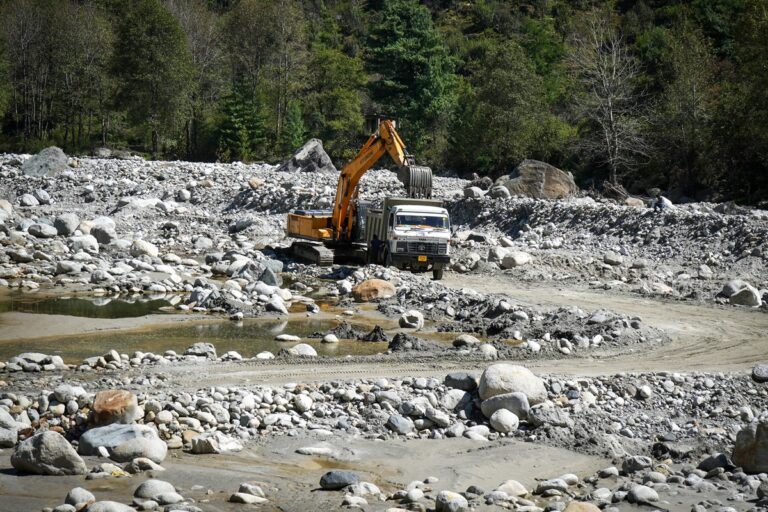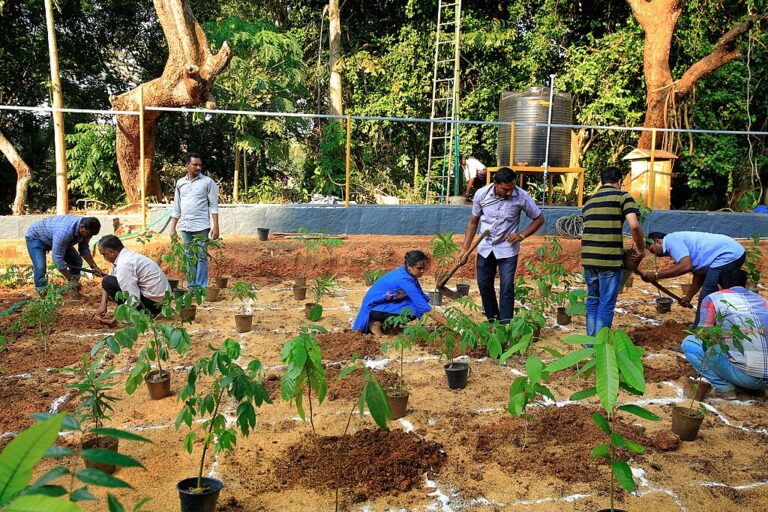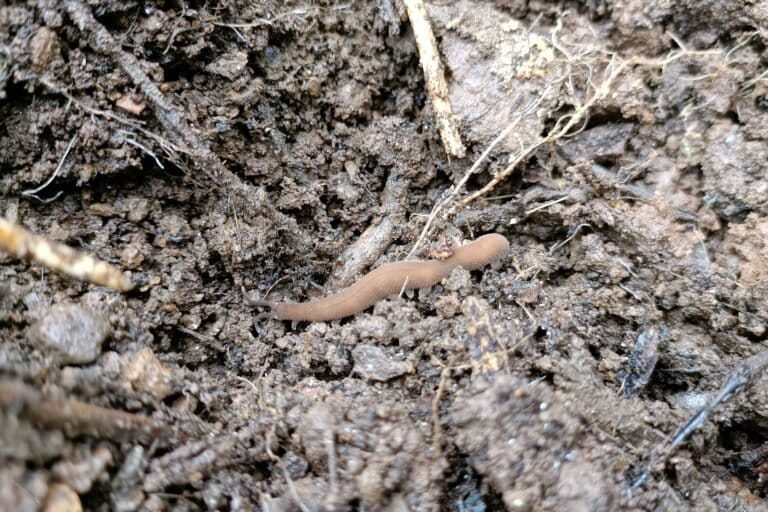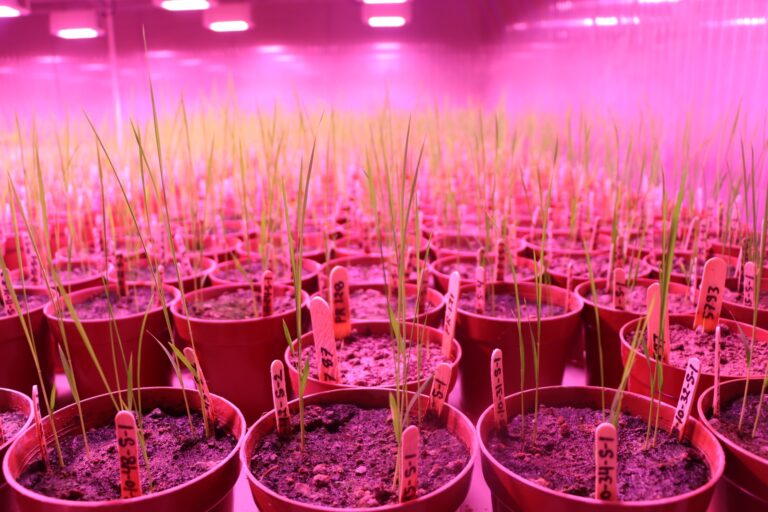- In Karnataka, an upcoming port and the corresponding road and railway network could destroy a turtle nesting region in Honnavar in Uttara Kannada district.
- Not just the turtles, environmental experts warn that the port will destroy the biodiversity of the Sharavathi river mouth, which is a rich breeding centre for fish and has dense mangrove forests.
- The port could also impact the Mugali Marine Protected Area, which is Karnataka’s first marine protected area that houses over 15 species that have the highest protection under India’s wildlife law.
Read part 1 of this series to understand Karnataka’s port-based development spree and what it means for the people living on the coast. In part 2, find out how a road connecting the ongoing Honnavar port project to the highway is affecting fisherwomen.
At about midnight on April 27, 2022, a moonless night, there was a flurry of action near the Sharavathi river mouth on the sandy beach of Kasarkod-Tonka, a few metres away from where the river meets the Arabian Sea. A small crowd of fishermen and members of Karnataka’s forest department of Honnavar range stood around a 1×1 square foot enclosure of green mesh net. They were looking inside the enclosure eagerly, flashing their torches, and taking videos. About 30 tiny olive ridley hatchlings had just made their way out of the nest, and they were squiggling and wiggling about in the sand.
One by one, the hatchlings were taken out, placed carefully in a tub of water, and carried near the shore. The turtles were placed on the sand. The group then stood near the shore, flashing their torches at the hatchlings (turtles move towards light), guiding them towards the sea.
Sea turtles in India are protected under Schedule 1 of the Wildlife Protection Act, 1972. This means that they are accorded the highest protection, and any harm caused to them is a punishable offence by law. In February 2021, the Union Ministry of Environment, Forests, and Climate Change launched the National Marine Turtle Action Plan (2021-2026). The action plan mentioned that one of the major threats to turtles is the construction of ports and jetties.
The beaches of Honnavar, a sub-district in the Uttara Kannada district of Karnataka, cover seven coastal villages — Apsarkonda in the south, Kasarkod, Karki, Mallukurva, Haldipur, Manki, and Pavinkurve in the north.
A 2016 study of turtles along Karnataka’s coastline by Environmental Management and Policy Research Institute and marine conservation research outfit Dakshin Foundation says that Karnataka has been active in its turtle conservation efforts since 1984. A 2002 study on Karnataka’s coastline by the Wildlife Institute of India shows that the olive ridley’s nestings in Kasarkod in Honnavar were first recorded in 1984. Honnavar was where one of the first olive ridley hatcheries in the state was launched.

The forest range office of the Honnavar division has been maintaining a register of turtle nestings and hatchlings since 2015, recording the GPS location of the nest, date, name of the informant, location, and the number of nests or eggs found. According to the documents reviewed by Mongabay-India, in the last nesting season alone, between October 2021 and April 2022, at least 29 turtle nests were recognised and recorded by the forest department.
The fishing community plays an important part in turtle conservation efforts. A group of 40 young people, under fisher Ramesh Tandel, have been actively organising turtle awareness programs in Honnavar for the last five years and regularly inform the forest department of turtle nestings and hatchings. “People in our village have a lot of respect for the turtle. Especially the female turtle that comes to the nest. Women in our village offer their prayers whenever she crawls up the nest. They find it sad that this species does not get to see her children,” Tandel told Mongabay-India. The turtle is worshipped as Kurma, an avatar of Vishnu, a principal deity in Hinduism.
“The area near the river mouth is not inhabited,” said Prakash Mesta, a marine biologist based in Honnavar. His research areas include studying the benthos of Sharavathi river and training in GIS (Geographic Information System) maps. He works as a marine consultant for Sneha Kunja, a non-profit based in Honnavar. “Turtles like sand, and quiet, dark spaces. This region is perfect for them,” he told Mongabay-India
Turtles nest not only near the river mouth, they nest and hatch across the stretch of the beach. But, an upcoming port that is spread over 44 hectares near the river mouth, along a road and railway line, is threatening the existence of these turtles. In July this year, the fishing community of Kasarkod-Tonka filed a petition at the National Green Tribunal (NGT) complaining that the construction poses a threat to olive ridley nestings. The community complains that the site of construction is where olive ridleys nest, and that the port authorities have “misguided” the state on the impact the project would have on wildlife, among many other impacts.

Read more: Karnataka’s port-development spree ignores coastal communities’ concerns
How is the port project getting away with construction at a turtle nesting site?
On February 22, 2021, one of the fish trader unions of Honnavar, Honnavar Taluk Hasimeenu Vyaparastara Sangha, filed a public interest litigation in the Karnataka High Court challenging an environmental clearance that was given to the port in September 2012. The petition alleged that the port came up on a turtle nesting site following which the Karnataka High Court asked the National Centre for Sustainable Coastal Management (NCSCM), a government research institution based in Chennai, to carry out a survey to determine whether the 44-hectare area is a turtle nesting site or not.
The NCSCM did a two-day survey on August 2-3, 2021, at a time when olive ridley turtles do not nest. Their nesting season is between October and April. As expected, the team did not find any turtle nestings during that time. They also plotted the GPS coordinates of turtle nesting data between 2016 and 2021 provided by the forest department. The report mentioned that the data provided by the forest department indicated all nests were in the sea. This oddity in the report was pointed out in a letter addressed by the Honnavar forest division to the state forest department as well as a letter by the fishers to the Karnataka Biodiversity Board.
Mesta added that they may have fed the coordinates in a different format. “Geographical locations are expressed in different formats,” explained Mesta. For example, he continued, the Survey of India toposheets use Degree Minutes Second (DMS) format. Forest institutes use Decimal Degree Minutes (DM) format. GIS researchers use the Decimal Degree (DD) format. “The forest department coordinates are in the Degree Decimal Minutes (DDM), and the NCSCM plotted it on Decimal Degree (DD). The NCSCM did not convert the format while mapping the location points, and therefore wrongly depicted the forest department GPS data,” Mesta told Mongabay-India.
The NCSCM report ultimately declared that no turtle nests were found in the 44-hectare area. Subsequently, the Karnataka High Court dismissed the petition on November 25, 2021, stating that they “cannot keep interfering in such matters which adversely affect the economy of the country.”
The latest petition filed in the NGT accuses the port authorities of deliberately hiding that the road construction was proceeding on a turtle nesting beach during the peak nesting season (December to February). The road is being built as part of the port project. This year, two turtle nests, on January 29, and February 17 each, were found to be a few metres away from the road. The fishing community also blames the forest department for their oversight while providing forest clearance for the road on a turtle nesting site, and says that it is underreporting the turtle nests as it did not record the nest on January 29, 2022, and it was the fishers who provided documented evidence for it.
“They are deliberately under-recording the turtle nesting incidents in the Register maintained by the Forest Department, an attempt for the quiet deletion of the turtles along the Kasarkod beach which is now the subject matter of HPPL port project,” says Sreeja Chakraborty, an environmental lawyer and Director of Living Earth Foundation, an environmental monitoring and advocacy organisation reviewing all the legal documents related to the project.
Construction around turtle nesting is a serious offence. In Goa, shack owners at Morjim beach, a turtle nesting site, were fined Rs. 100,000 each in 2017. “I’m really surprised as to how the Karnataka coastal zone management authority could overlook this,” she told Mongabay-India.
Read more: A road for a port cuts through the livelihoods of fisherwomen in Uttara Kannada
It’s not just about the turtles
“The Sharavathi is an estuarine complex of seven rivers,” Mesta emphasised. The region has dense mangrove cover, with ten different types of mangroves and their associates. This region is ideal for mangroves like Sonneratia alba, Rhizophora spp., Avicennia spp., Bruguiera spp., Acanthus ilicifolius etc. The mangrove boardwalk, run by the Honnavar Forest Division, is like a dense jungle of mangroves, and witnesses a daily footfall of about 300 people. When Mongabay-India visited the place on a boiling April afternoon this year, the cool dense canopy cover offered by the mangroves was a major respite for the tourists.
The river mouth is an endless expanse. The coastal sand spit, on which the port is meant to be built, stretches for at least five kilometres. The endpoint is where the sea and the river meet.
“The river mouth itself is a rich breeding ground for different kinds of fish,” said Mesta. While freshwater terrapin turtles are found on the riverside, the coastal sandy shore is the nesting ground for the olive ridleys, who, once hatched, come back to the same spot to nest, following the earth’s magnetic field.

“The port will require continuous dredging, and will completely change the topography of the river mouth, and fish will not come to breed here. The big breeding centre will be lost, and the beaches will be lost,” explained Mesta while noting that the sand spit is a sandy shore, dynamic, unstable, and therefore unfit for construction.
He added that historical census documents and maps since 1862 have shown this region to be highly erosive. A district census handbook of 1961 indicates that the changing shape of the Sharavathi river mouth made a commercial port unviable. “As per the CRZ notification 2019, port and jetty constructions are prohibited in a high eroding coastal area,” says Mesta. In August 2013, the Karnataka ports department notified newly declared port limits for Kasarkod port.
Mesta said that the new limits cover the entire mangrove forests, fishing harbour and coastal commons, and the state’s first marine protected area. According to minutes of the meeting of the State Board For Wildlife held on March 9, 2020, the chairman and board members approved “in-principle the proposal to declare the Karwar-Honnavar coastal area as a “marine wildlife sanctuary” with a budget of one crore earmarked for the development of this new marine protected area. “The region is rich with at least 15 different types of Schedule 1 species – indigenous sponges, corals, polyps, sea cucumbers, different species of dolphins, olive ridleys … and this will now come under port limits! How are they thinking this through!” Mesta said.
Queries sent to the Karnataka government, Honnavar Port Private Limited, Karnataka Coastal Zone Management Authority and the National Centre for Sustainable Coastal Management (NCSCM) were unanswered at the time of publishing.

Read more: Fish famine, livelihood loss because of upcoming Vizhinjam port, say fishers of south Kerala
Why did it all start in the first place?
The environmental impact assessment (EIA) of the port of February 2012 notes that connectivity is a major attraction point for the site of the port, as it is close to Bellary district in the hinterland, the heart of many industrial projects of the state. The EIA also mentioned that coal-based power plants meet 27 percent of the power demand of Karnataka. The proposed port is majorly supposed to carry coal. JSW Energy Limited (JSWEL) has planned to commission the expansion of its coal-based thermal power plant in Vijaynagar in Karnataka.
The report also talked about fulfilling the requirement of two coastal coal-based thermal power plants — with a capacity of 1,015 megawatts (MW) and 4,000 MW in Tadri and Mangalore respectively. It justified the need for the port by concluding that the demand-supply gap of coal is expected to increase in the coming years, and this barge/vessel loading facility will meet this demand.
But the thermal plants in Mangalore and Tadadi have already been stalled indefinitely.
Meanwhile, Mesta notes that this port is creating a conflict between fishers, ecology, and industry. “The concept of estuarine ports is gone. They have a problem of siltation, and money goes into dredging alone. They are non-profitable ports and disturb the entire ecosystem of fisheries and ecology. My opinion is to squash the Honnavar port limits which are falling on high eroding coastal areas. There needs to be an urgent meeting about this – the port authorities need to speak to all stakeholders,” he concluded.






 Olive Ridley turtles return to the same beach where they hatched to lay their eggs. Photo by Hagen Desa/Mongaaby.
Olive Ridley turtles return to the same beach where they hatched to lay their eggs. Photo by Hagen Desa/Mongaaby. 










